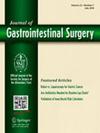基于人群的胃肠间质瘤患者生存结果性别差异分析
IF 2.2
3区 医学
Q3 GASTROENTEROLOGY & HEPATOLOGY
引用次数: 0
摘要
虽然性别差异已被证明会影响多种肿瘤的预后,但其在人群水平上对胃肠道间质瘤(ggist)生存的具体影响仍不确定。因此,我们旨在利用监测、流行病学和最终结果(SEER)数据库调查ggist预后的性别差异。方法从SEER数据库中检索2000 - 2019年的ggist患者。为了减少选择偏差,使用倾向评分匹配(PSM)。采用Kaplan-Meier分析和Cox比例风险模型评估临床特征对总生存期(OS)和癌症特异性生存期(CSS)的影响。结果共分析ggist患者3006例,其中男性1459例,女性1547例。与女性患者相比,男性患者表现出更高的white比例,更晚期的T期,更大的肿瘤大小,有丝分裂指数升高。PSM前,男性患者的OS明显更差(风险比[HR], 1.55;95% ci, 1.33-1.81;P <.001)和CSS结果(HR, 1.61;95% ci, 1.28-2.02;P <.001)。此外,他们在1年、3年和5年随访期间的平均OS和CSS率较低(P < 0.05)。即使在PSM后,男性患者仍然表现出较差的OS (HR, 1.30;95% ci, 1.10-1.54;P =.002)和CSS结果(HR, 1.34;95% ci, 1.05-1.70;P = 0.016),在1年、3年和5年随访期间,平均OS和CSS率持续低于女性患者(P < 0.05)。无远处转移的男性5年OS为78.8%,CSS为90.0%,均低于女性的85.5%和93.7% (P < 0.05)。男性远处转移的5年OS为48.7%,CSS为58.8%,与女性的55.4%和65.3%相似(P > 0.05)。多因素Cox回归分析发现,年龄、种族、性别、M分期、手术干预、肿瘤大小和有丝分裂指数是OS和CSS的独立危险因素。结论ggist患者男女临床特征明显,女性患者OS和CSS均有改善的趋势。手术治疗有可能改善ggist患者的预后。本文章由计算机程序翻译,如有差异,请以英文原文为准。
A population-based analysis of gender differences in survival outcomes for gastric gastrointestinal stromal tumors
Background
Although gender-based differences have been demonstrated to affect the prognosis of multiple tumors, their specific influence on the survival of gastric gastrointestinal stromal tumors (gGISTs) at the population level is still uncertain. Consequently, we aimed to investigate gender disparities in the prognosis of gGISTs using the Surveillance, Epidemiology, and End Results (SEER) database.
Methods
Patients with gGISTs from the years 2000 to 2019 were retrieved from the SEER database. To minimize selection bias, propensity score matching (PSM) was used. Kaplan-Meier analyses and Cox proportional hazard models were used to assess the influence of clinical characteristics on overall survival (OS) and cancer-specific survival (CSS).
Results
A total of 3006 patients with gGISTs were analyzed, including 1459 males and 1547 females. Compared with female patients, male patients exhibited a higher proportion of Whites, more advanced T stage, larger tumor sizes, and elevated mitotic index. Before PSM, male patients experienced significantly worse OS (hazard ratio [HR], 1.55; 95% CI, 1.33–1.81; P <.001) and CSS outcomes (HR, 1.61; 95% CI, 1.28–2.02; P <.001) than female patients. Furthermore, they had lower mean OS and CSS rates at the 1-, 3-, and 5-year follow-up intervals (P <.05). Even after PSM, male patients continued to show poorer OS (HR, 1.30; 95% CI, 1.10–1.54; P =.002) and CSS outcomes (HR, 1.34; 95% CI, 1.05–1.70; P =.016) than female patients, with persistently lower mean OS and CSS rates across the 1-, 3-, and 5-year follow-up intervals (P <.05). For males without distant metastasis, 5-year OS was 78.8% and CSS was 90.0%, both lower than females’ 85.5% and 93.7% (P <.05). For males with distant metastasis, 5-year OS was 48.7% and CSS was 58.8%, similar to females’ 55.4% and 65.3% (P >.05). Multivariate Cox regression analysis identified age, race, gender, M stage, surgical intervention, tumor size, and mitotic index as independent risk factors for both OS and CSS.
Conclusion
Patients with gGISTs exhibit distinct clinical characteristics between males and females, with female patients showing a tendency toward improved OS and CSS. Surgical treatment has the potential to enhance the prognosis of patients with gGISTs.
求助全文
通过发布文献求助,成功后即可免费获取论文全文。
去求助
来源期刊
CiteScore
5.50
自引率
3.10%
发文量
319
审稿时长
2 months
期刊介绍:
The Journal of Gastrointestinal Surgery is a scholarly, peer-reviewed journal that updates the surgeon on the latest developments in gastrointestinal surgery. The journal includes original articles on surgery of the digestive tract; gastrointestinal images; "How I Do It" articles, subject reviews, book reports, editorial columns, the SSAT Presidential Address, articles by a guest orator, symposia, letters, results of conferences and more. This is the official publication of the Society for Surgery of the Alimentary Tract. The journal functions as an outstanding forum for continuing education in surgery and diseases of the gastrointestinal tract.

 求助内容:
求助内容: 应助结果提醒方式:
应助结果提醒方式:


